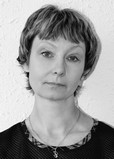Correlation of Changes in Physical Development and Physical Fitness of Preschoolers, Schoolchildren and University Students
Фотографии:
ˑ:
Associate Professor E.A. Koipysheva1
Dr.Med., Professor V.Y. Lebedinskiy1, 2
1Irkutsk National Research Technical University, Irkutsk
2Irkutsk State University, Irkutsk
Objective and structure of the study. For preschoolers, school and university students, the optimal level of motor activity is a physiological need and an important component of their healthy lifestyle. In this view, we conducted a comparative analysis of the levels of their physical development and physical fitness at the early stages of ontogenesis (n=10,618). The monitoring technologies enabled to detect a certain correlation of changes in the respondents’ rates.
When comparing the growth rates of physical development and physical fitness of the preschoolers, the maximum increase in terms of most indicators was observed at the age of 5-6 and this trend was typical of the children of both sexes.
The schoolchildren were characterized by the alternating periods of growth of physical development and physical fitness rates. The physical development indicators in the girls increased rapidly at the age of 12-13; moreover, in their development they significantly outpace boys (13–15 years). Among boys, the maximum increase in the physical fitness rates (8-11 years) takes a longer period of time, especially after 14 years. In girls, the most intensive growth is observed at the age of 9-11.
Results and conclusions. The female students were not found to have any significant alternations in the growth of these parameters, since, basically, the process of their physical development, running in parallel with their physical fitness training, comes to an end, however, it depends on the peculiarities of organization of physical education classes for student youth.
Keywords: physical development, physical fitness, monitoring, preschoolers, school students, students.
References
- Vinogradov P.A., Parshikova N.V., Mochenov V.P., Izaak S.I. [publ.] Deyatelnost Goskomsporta Rossii po osuschestvleniyu monitoringa fizicheskogo zdorovya naseleniya, fizicheskogo razvitiya detey, podrostkov, molodezhi [Activity of State Sports Committee of Russia to monitor physical health of the population, physical development of children, adolescents, youth]. Experience in the constituent entities of the Russian Federation in physical health monitoring among children, adolescents, youth: Col. scientific works. M., 2002. pp. 411.
- Gerasimova I.N., Larina M.V., Sidorova I.Yu. et al. Fizicheskoe razvitie i fizicheskaya podgotovlennost detskogo naseleniya goroda Irkutska [Physical development and physical fitness of Irkutsk child population]. Irkutsk: Irkutsk State Technical University, 2012.v. 1. Doshkolniki. 142 p.
- Izaak S.I. Monitoring fizicheskogo razvitiya i fizicheskoy podgotovlennosti: teoriya i praktika [Physical development and physical fitness monitoring: theory and practice]. M.: Sovetsky Sport publ., 2005.196 p.
- Koypysheva E.A., Rybina L.D., Lebedinsky V. Yu. Fizicheskoe razvitie i fizicheskaya podgotovlennost doshkolnits, shkolnits i studentok Irkutska [Physical development and physical fitness of preschool girls, schoolgirls and students of Irkutsk]. Teoriya i praktika fiz. kultury. 2016. no. 4. pp. 4143.
- Landa B.Kh. Metodika kompleksnoy otsenki fizicheskogo razvitiya i fizicheskoy podgotovlennosti [Methodology for comprehensive assessment of physical development and physical fitness]. Study guide. Kazan, 2000. 76 p.
- Lubysheva L.I., Zagrevskaya A.I., Peredelsky A.A. et al. Sportizatsiya v sisteme fizicheskogo vospitaniya: ot nauchnoy idei k innovatsionnoy praktike [Sportization in physical education system: from scientific idea to innovative practice]. M.: Teoriya i praktika fiz. kultury i sporta publ., 2017. 200 p.
- Martynyuk O.V., Vilensky V.N. Otsenka urovnya zdorovya studencheskoy molodezhi po pokazatelyam adaptatsionnogo potentsiala, biologicheskogo vozrasta i po rezervam bioenergetiki organizma [Assessment of health level of students by indicators of adaptive potential, biological age and by body bioenergy reserves]. Teoriya i praktika fiz. kultury. 2015. no.3. pp. 2028.
- Pashchenko L.G.,Krasnikova O.S. Vliyanie dvigatelnogo rezhima studentov vuza na pokazateli fizicheskogo zdorovya [Influence of motor mode on physical health of university students]. Teoriya i praktika fiz. kultury, 2017, no. 6, pp. 24-26.



 Журнал "THEORY AND PRACTICE
Журнал "THEORY AND PRACTICE